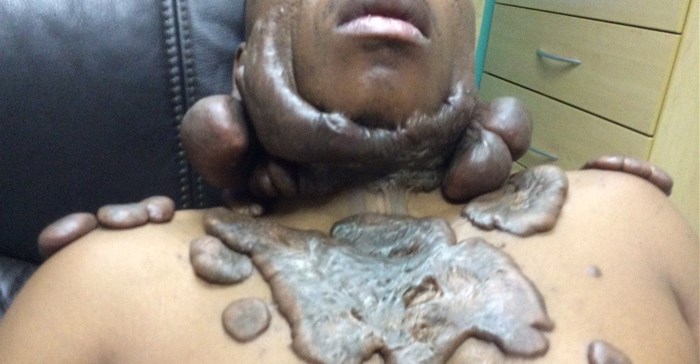






Keloids are the body’s abnormal scar response to injury and the scar tissue continues to grow beyond its normal bounds. The condition is quite difficult to treat, as there is a very high risk of them returning. Treatment usually begins with steroid or cortisone injections into the affected area to try and control the abnormal growth. Only in severe cases is surgery recommended.
Aaron had sought medical advice and treatment on numerous occasions, but due to the severity of this condition, the lesions came back larger and more severe than before. Even the areas where skin grafts had been harvested to cover the excisions had turned into large and hard keloid scars.
Although most parts of Aaron's body show signs of severe keloid formation, he is mostly concerned with the visible lesions on his face and neck. Because all other treatments had failed so far, I decided to use surgical excision with immediate post-surgical radiation therapy as a last resort treatment.
The muscles of facial expression and the nerves supplying these muscles are adjacent to the thickened and contracted scar tissue and can easily be damaged during excisional surgery. Therefore we removed as much of the scar tissue on his face and neck as possible with electrosurgery to prevent intra operative bleeding and nerve injuries.
Because of the scar tissue covered large areas in the face and split thickness skin grafts had to be harvested from the thigh to cover the areas where the keloids were excised.
Aaron’s surgery was very intricate, due to the extent of his keloids there was very little excess skin left to suture so we had to use skin grafts. This also meant that the areas where the skin grafts had been harvested on his thigh, would also be included in the radiation therapy, to prevent future keloid formation in that area.
Aaron underwent radiation therapy to decrease the chance of the keloids returning. The first treatment had to be done a few hours after the surgery and then another two treatments the day after. Radiation suppresses fibroblast activity and thus collagen formation which is usually increased in keloid formation.
Radiation therapy was planned and performed by Dr Rika Pienaar, a radiation oncologist based in Cape Town. In the post-operative period, the wound care is of utter importance, and specialised nurses were involved in daily wound care. Prolonged and complicated wound healing can lead to new keloid formation too.
Aaron was able to undergo the surgery due to the generosity of three Namibian sponsors who covered his air ticket and accommodation. The surgery took place at Mediclinic Louis Leipoldt in Cape Town.